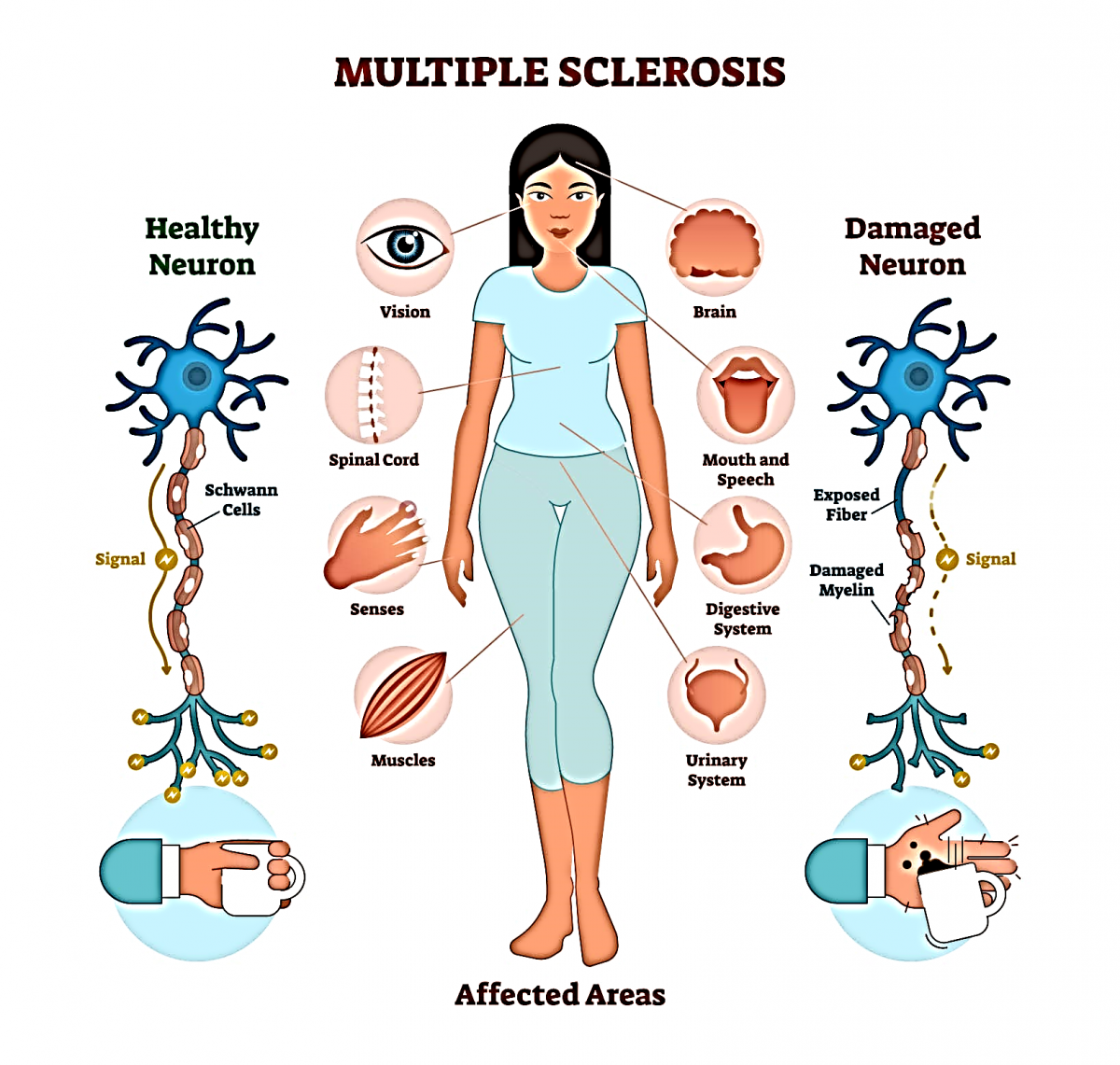- Published on
What Is Multiple Sclerosis?
- Authors
- Name
- Jake Konigsberg
- Role
- Founder
Multiple sclerosis (MS) is a central nervous system disease meaning it affects the brain and spinal cord. This disease occurs when one’s immune system mistakenly attacks the myelin coating (AKA myelin sheath) around the nerves. This coating is responsible for communication between the nerves, so when it is destroyed, the communication between the body and the brain is impaired. The impairment in communication results in a variety of symptoms and effects.
Multiple sclerosis is thought to be an autoimmune disease, meaning it is caused by the immune system attacking one’s own body, but no specific antigens have been identified. It is believed, however, that immune cells such as t cells and b cells play a role. T cells, for example, when they enter the nervous system, release chemicals causing inflammation resulting in damage to the myelin sheath. In MS, it is believed regulatory T cells, which normally can inhibit the inflammation caused by T cells, do not properly function, resulting in T cell inflammation unable to be inhibited. B cells are also thought to play a role as they produce antibodies which may cause damage to the central nervous system in MS.
It is not clear why MS happens, but it is thought to be an interplay of genetic and environmental factors. For example, mutations in the HLA-DRB1 gene are thought to be associated with increased risk of developing MS. There are also many environmental factors that increase one’s risk of developing MS. For instance, exposure to tobacco smoke, lack of sunlight exposure, and obesity increase one’s risk of MS.
